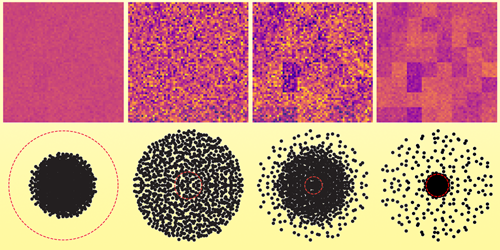Network Hierarchy Controls Chaos
Hierarchical structures are found in a variety of complex systems whose individual units are interconnected at different levels. The collective behaviors emerging from these layered systems are often difficult to disentangle and interpret. Focusing on the quintessential complex system—the brain—Łukasz Kuśmierz and collaborators from the Allen Institute in Seattle have now developed a model to explain the role of hierarchy in controlling the chaotic activity of neurons [1].
A simple hierarchical structure can be realized with a network in which nodes (neurons) with similar connectivity patterns are defined as belonging to the same “cluster.” At any time t + 1, the activity of each neuron is determined by the previous activities at time t of the neurons to which it is connected, according to some fixed rule. At the microscopic level, the dynamics are dominated by chaotic activity of the entire neuron population. At the macroscopic level, the dynamics are dominated by the behavior of clusters, each represented as the average of its constituent neurons. The researchers showed that competition between the microscopic and macroscopic dynamics leads to attenuation of chaos. This provides a robust mechanism to control and balance the network’s chaotic activity.
It has been postulated that the brain operates in a dynamical regime called the edge of chaos, where neuronal activity patterns are neither entirely ordered nor entirely random. It is thought that such a regime optimizes learning and information processing. According to Kuśmierz and co-workers, the competition that arises from introducing a hierarchical structure in a random network is sufficient to maintain the system near the edge of chaos, suggesting that this phenomenon could play an important role in biological neuronal systems.
–Agnese Curatolo
Agnese Curatolo is an Associate Editor at Physical Review Letters.
References
- Ł. Kuśmierz et al., “Hierarchy of chaotic dynamics in random modular networks,” Phys. Rev. Lett. 134, 148402 (2025).




